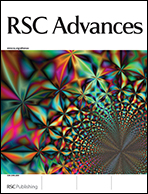A comparative thermal, optical, morphological and mechanical properties studies of pristine and C15A nanoclay-modified PC/PMMA blends: a critical evaluation of the role of nanoclay particles as compatibilizers†
Abstract
The role of organically modified nanoclays as compatibilizers for PC/PMMA blends has been investigated using thermal, optical, morphological and mechanical properties studies. The observation of single Tg, whose composition dependence shows negative deviation with respect to the additive and Fox laws, suggests the compatibilizing action of organically modified nanoclay. A significant decrease in opacity also points towards the compatibilizing action of nanoclay. The crossover from a two phase morphology of pristine blends to homogeneous morphology in the presence of nanoclay also indicates compatibilization.


 Please wait while we load your content...
Please wait while we load your content...